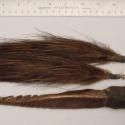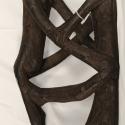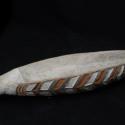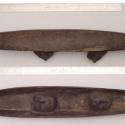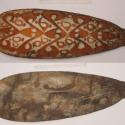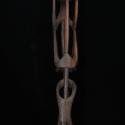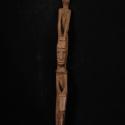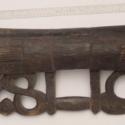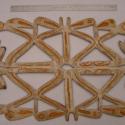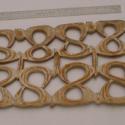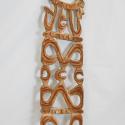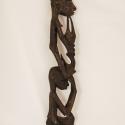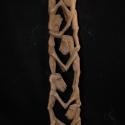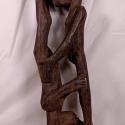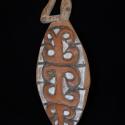Spirits of Wood: Asmat Carvings
From halfway around the world, a collection of intricate wood carvings created nearly half a century ago has made its way to the UNIMuseum. Made by the Asmat people of Irian Jaya (western New Guinea), these pieces represent a significant acquisition for our museum. The University Museum now holds one of the seven major collections of Asmat material culture in the United States.
The complex carvings of the Asmat were first seen by the Western world in the early 20th century, when a few pieces went on display in Europe and America. Many major artists, including Henri Matisse, were stunned by the imagery within this unknown artform. The later work of these Western artists reflects the influence of the Asmat carvings.
Asmat carvings, however, are not "art" as we conceive of it. They are a form of communication between the living and the dead, between the Asmat and the spirits around them. Their carvings make spirits tangible and create a balance between the seen and unseen world. The Asmat carver is not an artist but a man who uses his talents to "write in wood."
What impresses us in Asmat carvings is the interlacing of figures that flow from one to another. It is even more impressive when we realize that these intricate patterns were created using the simplest of tools (rock, bone, and shell). But carving in wood is merely part of a continuous cycle to the Asmat. They believe that humans were carved out of the wood of a tree. Living trees therefore represent the human form, with legs, arms, trunk, and a head. So when an ancestor dies, a carving is made to provide a remembrance of that ancestor and to give that person's spirit a place to reside. The cycle continues then from when the human form emerged from the wood, to death when the spirit returns to the wood.
The sculptures, bowls, shields, and drums carved by the Asmat were never intended to survive. In the hot, humid environment of coastal Irian Jaya, the Asmat assumed their carvings would succumb to the elements. Thanks to Thomas Oehrlien, who collected these pieces during the 1970’s while working in Indonesia, we are able to see these special pieces today.
This collection was acquired from Mr. Oehrlein with the assistance of the Friends of the UNI Museum, Dorothy Jean Ray, the Willis & Hazel Wagner Endowment, the UNI Provost & Vice President of Academic Affairs, the College of Social & Behavioral Science, and the Division of Continuing Education & Special Programs. We are extremely grateful to everyone who helped us make this acquisition. It is an exceptional gift to the present and future students of UNI who will have the opportunity to study and analyze this rare collection. It is also a “window on the world” for our visitors of all ages, who may never have the opportunity to make the arduous journey to the Asmat homeland or who are intrigued by the richness of cultural diversity.
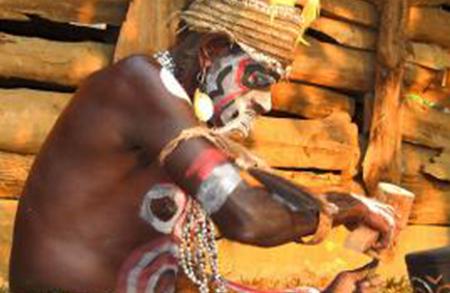
Museum Objects in this Exhibit
Displaying 1 - 22 of 22|
|


